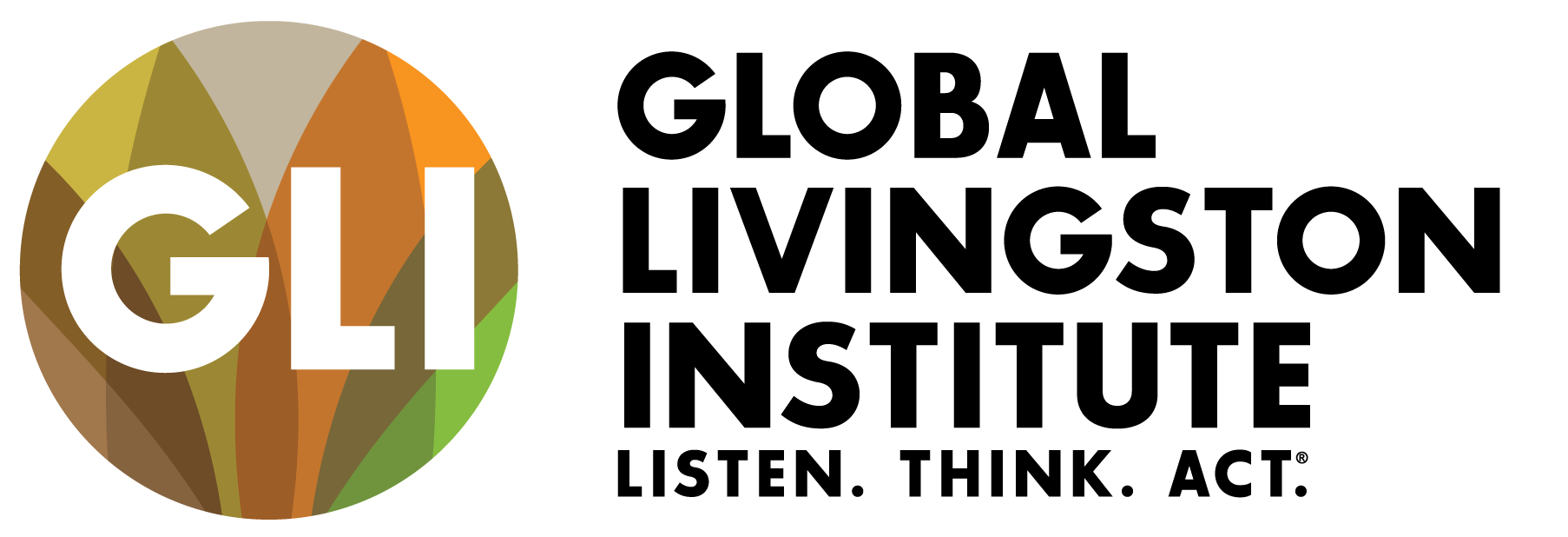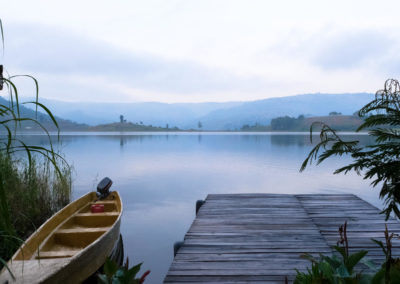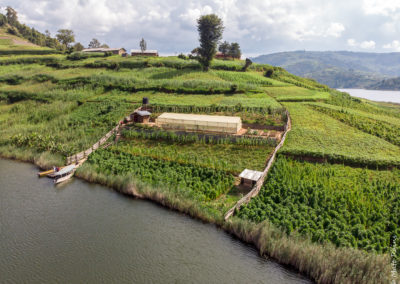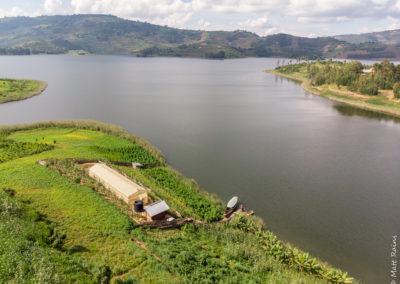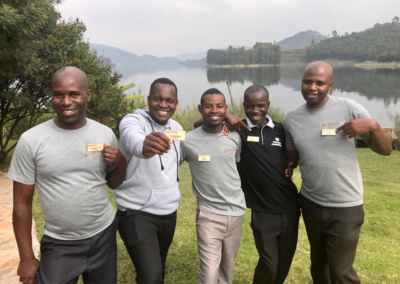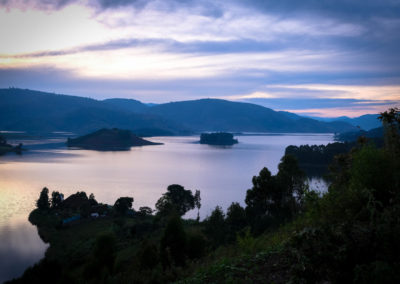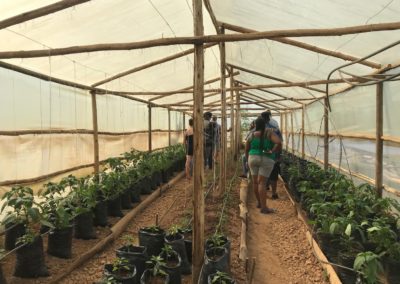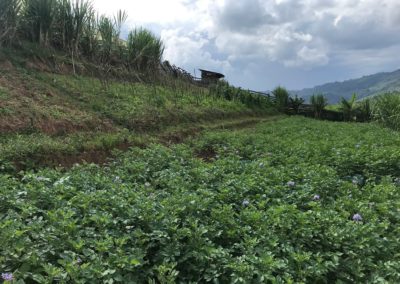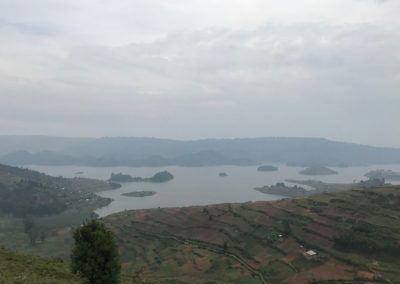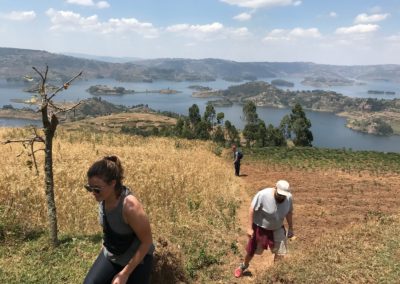Entusi Model Farm Team 2
Overview
Lake Bunyonyi is located in southern Uganda and is about 16 miles in length. Farmers surrounding Lake Bunyonyi rely on rainfall to water their crops. When the rainfall is not sufficient or it is dry season, the farmers must hand deliver water from Lake Bunyonyi to their crops. The process of getting water from the lake, filling in a bucket, and walking it back to their farms is long, difficult, and inefficient. Due to the steep terrain this process is tiresome and when the ground is wet, it is tricky for the villagers to successfully deliver the water. This means that crop yields do not reach their full potential; therefore, farmers are not able to generate the desired amount of revenue. Our goal with this project is to provide a solution that will transport water from the lake to the farmers with ease.
The primary client needs were an easily maintained and replicated system constructed from local materials while minimizing costs. Three design options were initially presented to the clients: the lift, hand pump, and bicycle pump. After delivering all initial design information, our Global Livingston Institute (GLI) contacts decided the hand pump met more of their criteria than the lift and bicycle pump. Calculations and risk assessments were then conducted to understand the design constraints of the hand pump including force requirements, dirt removal estimates, and overall costs. These new design details were presented to the clients and advisors. Feedback on filter installation was received and added to the specifications of the design. Overall, the team and project’s progress was held back by the inability to visit Uganda and conduct analyses and tests first hand. Our contacts in Uganda helped us to the best of their ability to find the necessary information for this project, however it is recommended that future engineers on this project visit the site to better understand and provide solutions for this community.
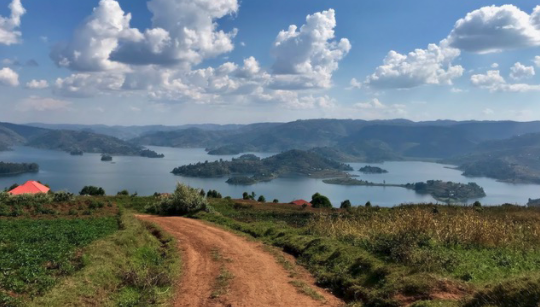
Live Zoom Chat
Use the link below to join us live from 8:00 – 10:30 a.m. on April 29.
https://mines.zoom.us/j/7088315757
Or Telephone:
Dial: +1 253 215 8782 (US Toll) or +1 346 248 7799 (US Toll)
Meeting ID: 708 831 5757
International numbers available: https://mines.zoom.us/u/adfOpky8mb
Team Members
- Serena Daluz
- Megan Dickson
- Joseph Golter
- Caroline Jeffords
- Carlos Ramos
- Viviana Verde
The Client
- Global Livingston Institute
Acknowledgements
Project Advisors: Elizabeth Reddy and Alina Handorean
Technical Advisor: Dr. Kristoph Kinzli
Video
Elevator Pitch
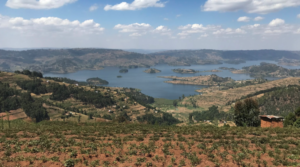
Our team was tasked with providing a replicable irrigation system for farms surrounding Lake Bunyonyi in Southern Uganda. Due to the intense dry seasons in this area, farmers are currently forced to hike down to the lake and carry buckets of water back to their farms in order to water their crops. We composed a design concept that uses a manual hand pump to extract water from Lake Bunyonyi and transport it to the level of the farms. Once the concept is implemented by the farmers it will save them time and energy while also improving production of their crops.
Design Approach

Looking at the design matrix above, a rating scale of 1-5 was used (1 being bad and 5 great), and the hand pump concept outscored the other designs. The hand pump meets all aspects of the design criteria fulfilling the request of the client.
While working with Global Livingston Institute it was understood from the beginning that there would be expectations that the final product would have to encompass. One of the starting design specifications was a tight budget that the final product would have to stay within because eventually the design will be intended for individual farmers to purchase. The budget was set between 60 and 80 US dollars per irrigation system. This budget was set in place by our contacts at Global Livingston Institute and the people of the Entusi community. The idea of this project is to make sure the new irrigation system is accessible to all the farmers. A small budget ensures that every farm would be able to recreate the chosen system. In addition to the cost requirements, each irrigation unit needs to maintain a sufficient water supply to each farm along Lake Bunyonyi so the farmers will not need to rely on rain collection.
While maintaining this budget the client specified that the irrigation system would be used to minimize the number of trips the farmers were taking down to Lake Bunyonyi. It is highly encouraged by the client to ensure that the irrigation system is built using resources that are commonly found in the area. With materials that are locally found in the Uganda area maintenance becomes easier for the farmers. Since electricity is privately owned it was also suggested that the best way to implement a pump into the design would be to make it solar powered or manually powered. It is important that the pump is designed in such a way that costs stay low and the pump can be made from locally sourced resources.
A concise list of the preliminary design constraints and criteria can be found below:
Design Criteria:
- Easily replicable for individual farm use
- Easily maintained
- Does not rely on rainwater collection for steady water supply
- Provides enough water for the crops
Design Constraints:
- Price for implementation of individual units is $60 – $80
- Plot sizes of farms are 30 x 20 meters
- Steep gradient
- Incline of 10 meters from base of Lake Bunyonyi up to the farms
Design Solution
This hand pump (first image on the right) has a 50 millimeter diameter open top and connecting rod diameter of 12 millimeters. The recommended water setting depth is 20-45 meters.
The two other figures on the right illustrate the hand pump design. As the bottom figure on the right shows, one end of the PVC pipe will be submerged into Lake Bunyonyi. On this end of the pipe a netted filter will be attached in order to prevent aquatic life and algae from clogging the PVC pipe. The pipe will be buried underground in order to avoid damage from the sun, vehicles, animals, and people. The PVC will start in the lake and travel up to the different farms that are located within 10-20 meters of Lake Bunyonyi. The hand pump will be attached to the end of the pipe that is located at each individual farm.
These figures show a CAD model of the pump and a rendition of what the pump will look like. The handle of the pump moves up and down in order to create a suction. This suction forces the water to travel from the lake through the PVC piping and up to the farms. The water will flow out of a spout located on the end of the pump and will be caught in a storage tank for later use. The hand pump can be used by any member of the farm.
The hand pump will be secured on a 3 ft. x 3 ft. concrete slab and a 55 gallon water tank will be available next to the hand pump for water storage. The concrete slab will have a PVC pipe running through the middle of the slab to attach the pump at the top and the PVC piping at the bottom. The PVC pipe will be assembled with 10 foot sections and attached using ¾ couplers.
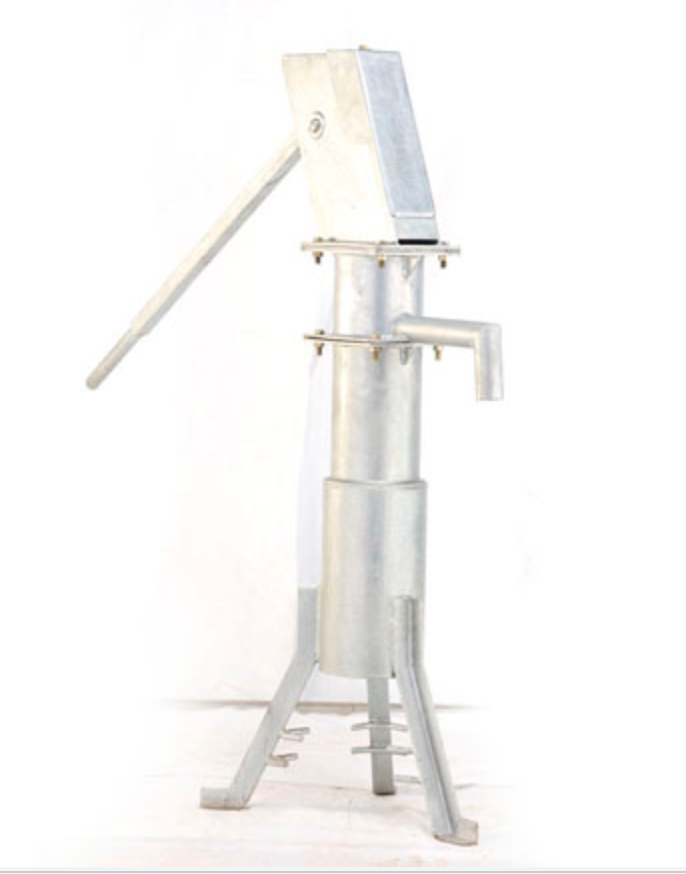
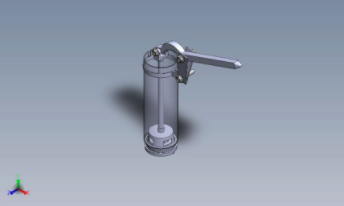
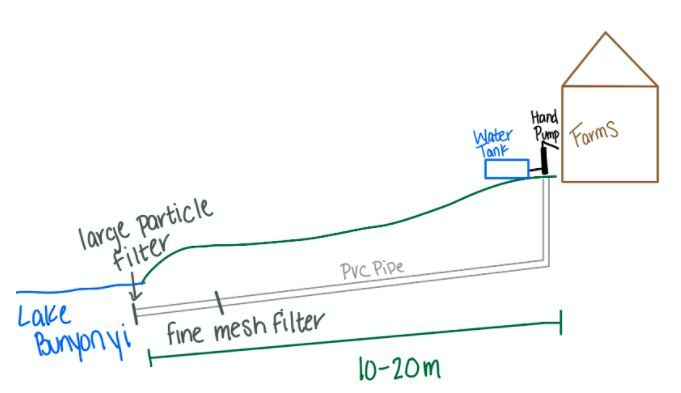
Next Steps
To move forward with this project, we recommend sending a team to Uganda so a true land survey can be done of the Lake Bunyonyi region alongside engaging with the community there to gain feedback. After viewing and evaluating some proposed job sites and communicating with the direct stakeholders of this project, prototyping can be conducted. It is essential to gather information from the community to ensure that the prototyping for this project can suit the needs of its users effectively. With testing, our proposed solution can then be fine-tuned and even expanded upon once a comprehensive view of the finished product can be evaluated in comparison to our theoretical calculated values and adjusted accordingly.
Meet the Team
Serena Daluz
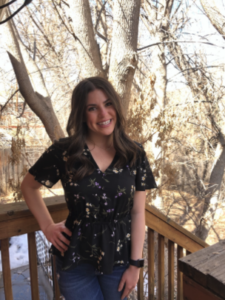
Hello, my name is Serena DaLuz and these past two semesters I have been working on the irrigation system project for small farms in Uganda that surround Lake Bunyonyi. My interest in the project sparked from my service trip I took to Nepal early into my college career where my team and I began to build a public restroom on the Khumbu Valley Trail. I thought I could take the knowledge I learned from that experience and put it towards this project. I am a senior studying mechanical engineering and after graduation I will be working for an aerospace company called Northrop Grumman doing propulsions engineering. This project has been an amazing experience and I enjoyed getting to know my clients in Uganda.
Megan Dickson
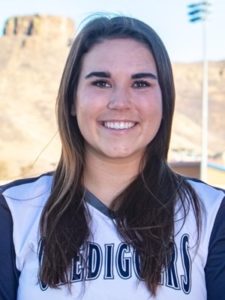 My name is Megan Dickson and I will be graduating with a B.S. in Civil Engineering in December 2021. During my time at Colorado School of Mines I played Mines varsity softball for 4 years. Outside softball and school I enjoy hiking, skiing, and visiting national parks. I hope to find myself in an engineering position in the future where I can apply my civil engineering skills towards construction management.
My name is Megan Dickson and I will be graduating with a B.S. in Civil Engineering in December 2021. During my time at Colorado School of Mines I played Mines varsity softball for 4 years. Outside softball and school I enjoy hiking, skiing, and visiting national parks. I hope to find myself in an engineering position in the future where I can apply my civil engineering skills towards construction management.
Joseph Golter
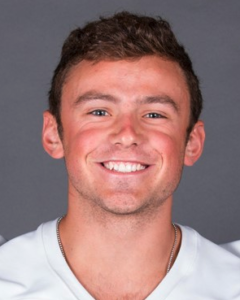
Caroline Jeffords
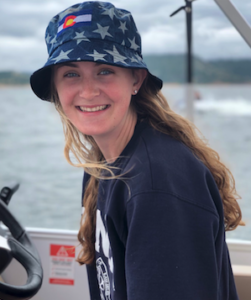 Hi, I’m Caroline and a big reason I chose to work on this project was because I thought I had a chance to travel to Uganda! Unfortunately, that wasn’t able to happen this year but I still had a great experience these past two semesters working with my team and our GLI contacts at Lake Bunyonyi. I am graduating in May with a civil engineering degree and will then move on to work as a roadway engineer.
Hi, I’m Caroline and a big reason I chose to work on this project was because I thought I had a chance to travel to Uganda! Unfortunately, that wasn’t able to happen this year but I still had a great experience these past two semesters working with my team and our GLI contacts at Lake Bunyonyi. I am graduating in May with a civil engineering degree and will then move on to work as a roadway engineer.
Carlos Ramos
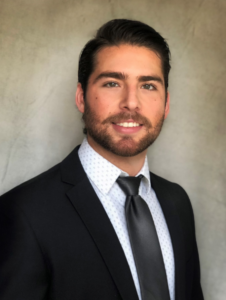 Hi my name is Carlos Ramos and I am a Civil Engineering student graduating in May 2021. I initially decided to work on this project due to its location and the people I was going to have an impact on. The fact that I could be helping someone remotely across the world is mind-blowing to me and being able to know that I can one day visit this community also makes this project more exciting. After I graduate, I’m going back to my hometown to work for an engineering firm called Kimley-Horn as a Civil Analyst. I am excited for what the future has to offer and I hope to one day be able to meet the Lake Bunyonyi community.
Hi my name is Carlos Ramos and I am a Civil Engineering student graduating in May 2021. I initially decided to work on this project due to its location and the people I was going to have an impact on. The fact that I could be helping someone remotely across the world is mind-blowing to me and being able to know that I can one day visit this community also makes this project more exciting. After I graduate, I’m going back to my hometown to work for an engineering firm called Kimley-Horn as a Civil Analyst. I am excited for what the future has to offer and I hope to one day be able to meet the Lake Bunyonyi community.
Viviana Verde
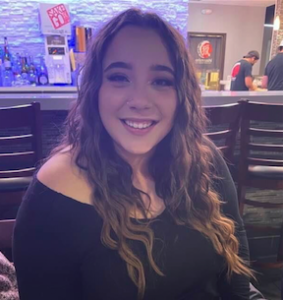 Hi I am Viviana Verde and I will be graduating this May with a B.S. in Mechanical Engineering. I was interested in this project because I wanted to apply my skills to something that would actually be useful and beneficial for people outside of my community. After graduation I will be interning at Electro-Mechanical Products and then coming back for a Master’s degree in Mechanical Engineering with a focus on manufacturing.
Hi I am Viviana Verde and I will be graduating this May with a B.S. in Mechanical Engineering. I was interested in this project because I wanted to apply my skills to something that would actually be useful and beneficial for people outside of my community. After graduation I will be interning at Electro-Mechanical Products and then coming back for a Master’s degree in Mechanical Engineering with a focus on manufacturing.
